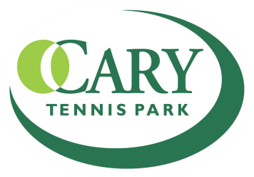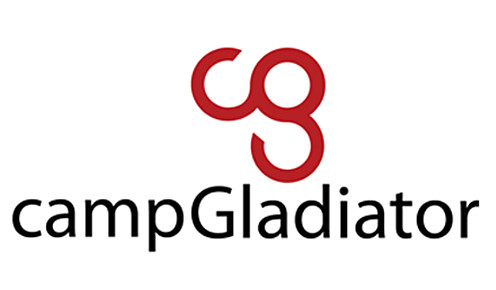Written by: Ashley Yartin, MS, LAT, ATC at EXOS @ Raleigh Orthopaedic
On Wednesday, September 27th, the United States will celebrate National Women’s Health and Fitness Day. Known as the nation’s largest annual health promotion event for women of all ages, an estimated 80,000 to 100,000 females from across the country will come together in unison. Girl Scouts, female health practitioners, and mothers, just to name a few, will gather at various locations around the US, including nursing homes, medical centers, gyms, park and recreation districts, health and service organizations, schools, retirement communities and various other community locations to partake in local women’s health and fitness events.
As women across the country come together to celebrate fitness, 1 in 2 women over the age of 50 will break a bone due to osteoporosis. Better known as “the silent disease,” osteoporosis rarely rears its ugly head until you experience an injury or an unfortunate fall, causing a bone to break, as typically, bone is otherwise lost with no obvious signs. According to the National Osteoporosis Foundation, of the estimated 10 million Americans with osteoporosis, about 8 million or 80% are women. Another startling statistic reads that a woman’s risk of breaking a hip is equal to her combined risk of breast, uterine and ovarian cancer. Although more common in older women, osteoporosis does not discriminate. One-quarter of men over 50 will break a bone due to osteoporosis. Publically, both Sally Field and Gwyneth Paltrow have both made national news suffering from the bone thinning disease.
How do you know if you are suffering from this disease? Osteoporosis is best diagnosed using a bone mineral density test. Not only does this test check your overall bone health, but this test can diagnose osteoporosis and tell you whether you are likely to break a bone. It can also track if your treatments are making your bones stronger.
The good news is, osteoporosis can be prevented, and at an earlier age. As the old saying goes, you are what you eat. Eating a well balanced diet can help with the prevention of osteoporosis. Supplementing with Vitamin D and Calcium may also be beneficial, especially for those lactose intolerant individuals. Many people consume less than half of the calcium they need. Good sources of calcium include low-fat milk, yogurt, dark green leafy vegetables and cheese.
Exercise has also been shown to prevent bone loss. Strength training, running, playing tennis and various other weight bearing activities, including dancing, can also help your bones grow stronger. Studies show that young women who dance, play sports, or do other physical activity have the highest bone density, and that postmenopausal women who work out regularly can prevent or reverse bone loss by almost 1% a year.
What can you personally do to stop osteoporosis before it takes over? Some factors cannot be controlled while others can. The risk factors against you from the get-go include gender, age, body size, ethnicity and family history. As we know, older women suffer from osteoporosis more often than men. Small, thin, Caucasian and Asian women are also at an increased risk as compared to Black and Hispanic women. Unfortunately, osteoporosis tends to run in families; therefore your family history may be working against you despite your good intentions.
The good news is some risk factors are preventable including calcium and vitamin D intake, medication use, activity level, smoking and drinking alcohol. A diet rich in vitamins and minerals is a great start on your way to prevention. Check with your healthcare provider regarding medications which increase your risk of osteoporosis. Living an active life and getting on your feet can help prevent weak bones. Not only do your heart and lungs suffer from smoking, but cigarettes are bad for your bones too. Alcohol has also been shown to cause bone loss and broken bones, so limiting unhealthy extracurricular habits can also decrease your risk.
Men and women with osteoporosis need to take care not to fall down as falls can break bones. There are various reasons people fall including due to poor vision and decreased balance. Raleigh Orthopaedic offers a CORE Program Balance Program complete with one on one consultations, group training and using a home balance program for those individuals who seek to continue exercise outside of balance class or who don’t have time in their busy schedule to come into the clinic. Our Balance Training Program is developed for any individual who experiences difficulty in maintaining balance, who is concerned about falling, and/or who seeks to improve stability. The exercises in this class focus on strengthening the lower body to improve stability in performing everyday activities. The course begins and ends with a balance assessment, which is used to identify individuals at risk for falling and to track progress after completing the program.
For more information about Raleigh Orthopaedic’s CORE program, you can contact CORE@raleighortho.com or call 919-863-6834. The CORE Program offers FREE balance assessments to all members of the community! For information on upcoming free balance assessments visit our Facebook page.
About Ashley Yartin, MS, LAT, ATC:
Ashley Yartin is a Certified Athletic Trainer at EXOS @ Raleigh Orthopaedic Clinic. She earned her Master’s Degree from LSU in 2009 and her Bachelor of Science Degree in 2007 from Florida State University. Ashley has been a Certified and Licensed Athletic Trainer since 2007. Ashley worked with the East Carolina University Women’s Basketball program as an athletic trainer for 6 years prior to joining Raleigh Orthopedic Clinic in 2015. Ashley enjoys golfing with her husband Mike, traveling and chasing around her 17 month old son Jace.









